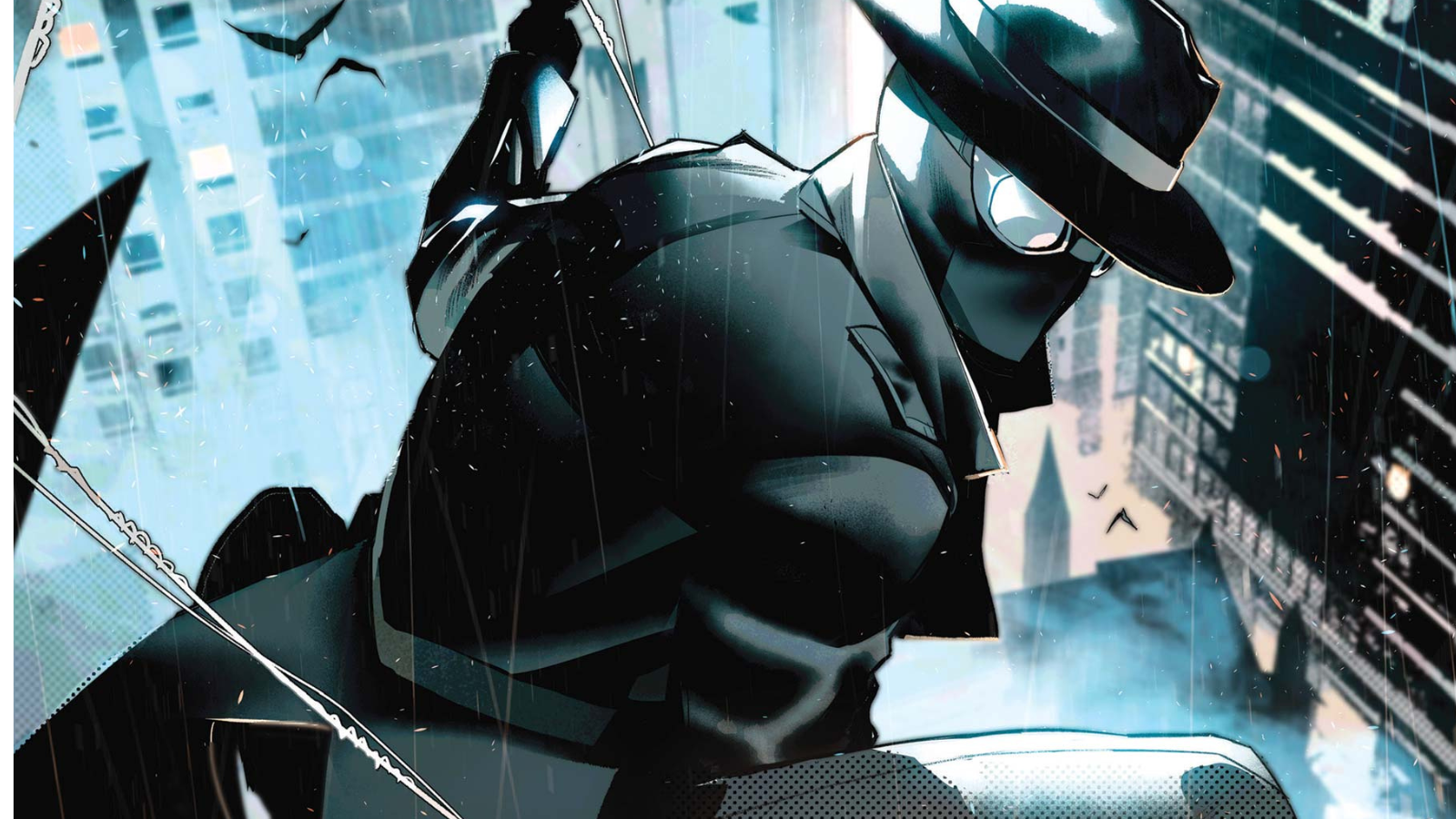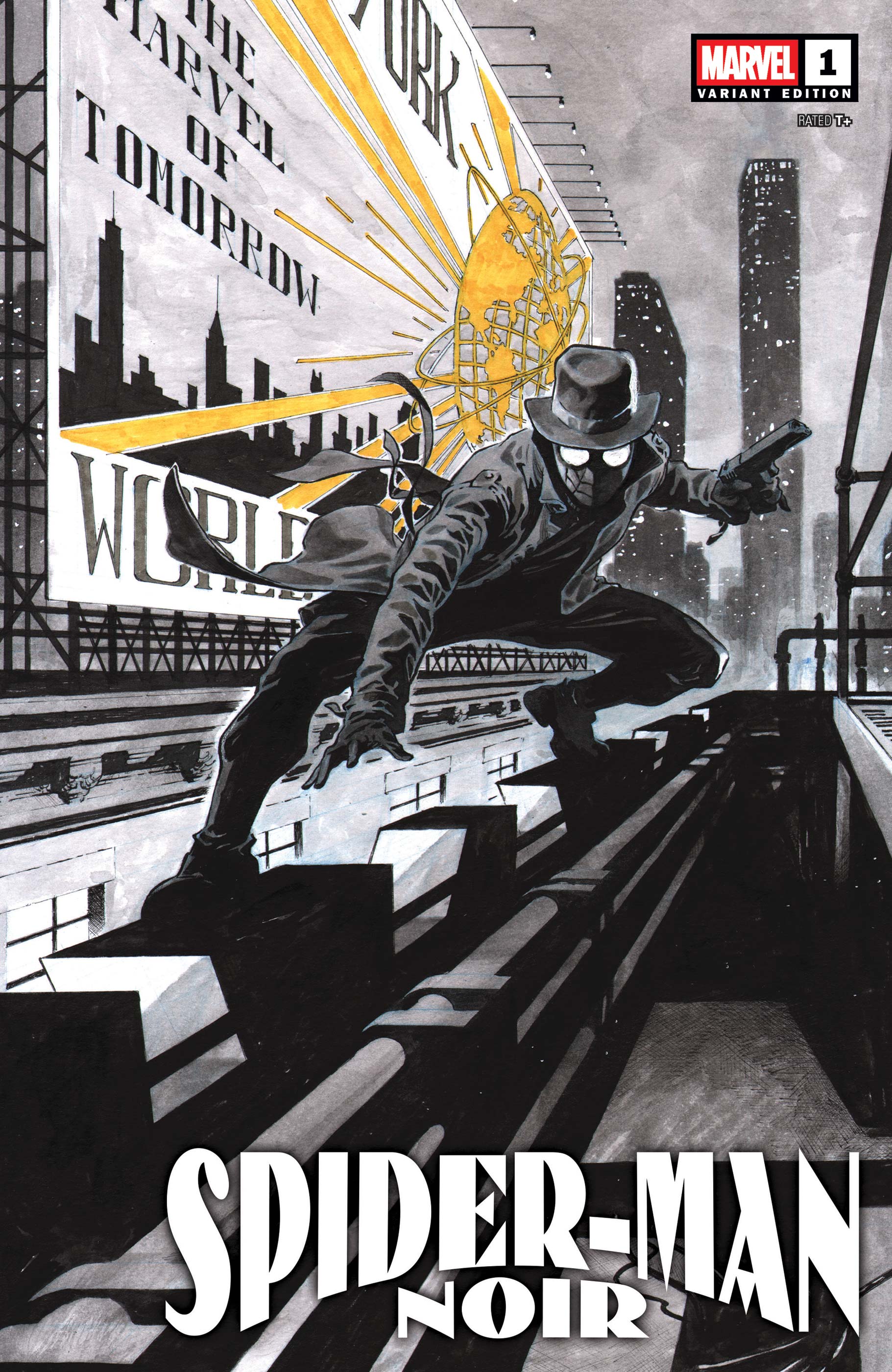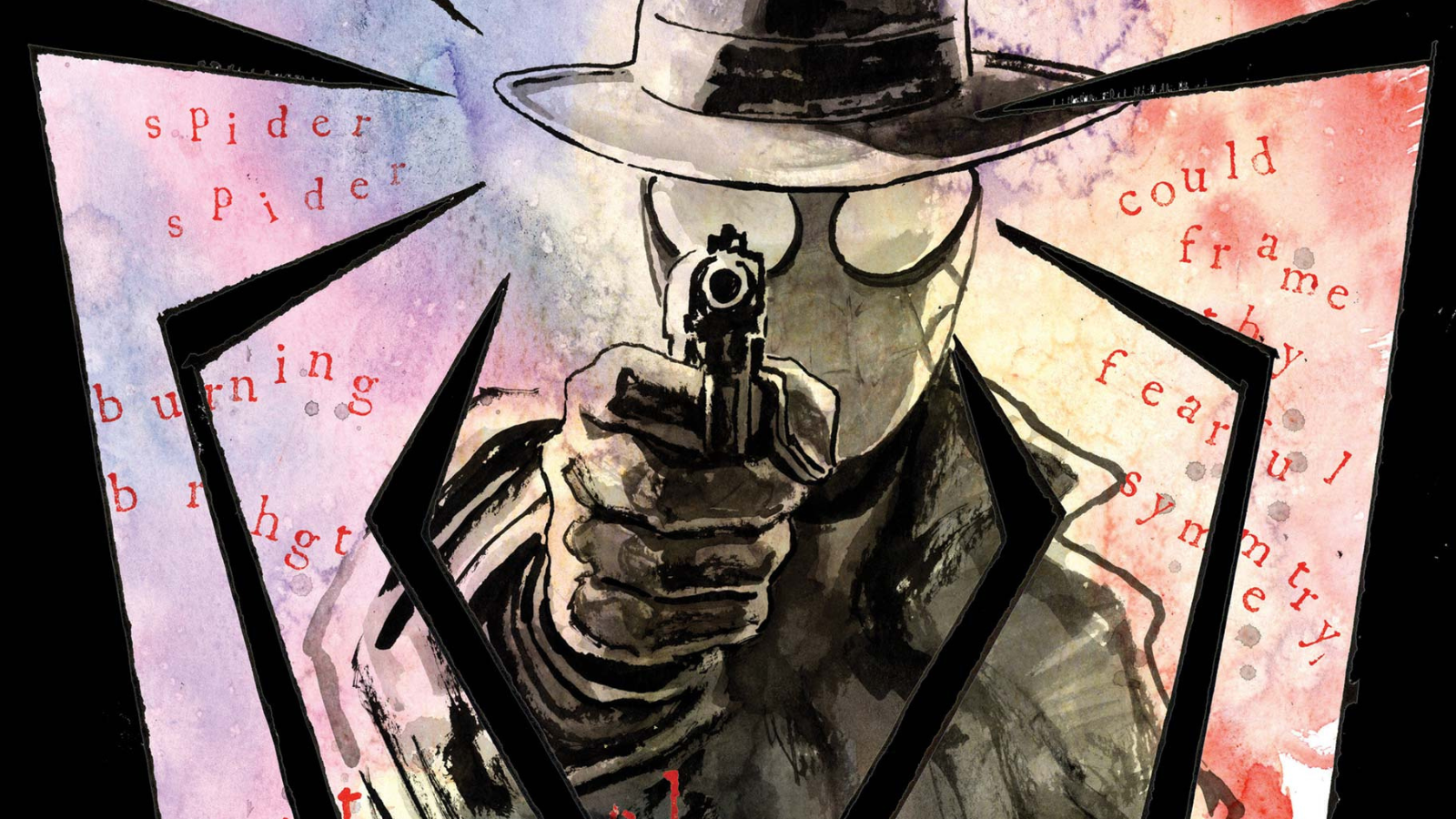
With so many different versions of Spider-Man swinging around the Marvel Multiverse, it can be difficult at times to keep track of exactly who’s who amongst their infinite ranks. A few, however, manage to stand out from the pack, for one reason or another. Spider-Man Noir is one of those, and not just because Nicholas Cage’s portrayal of him in Into the Spiderverse has become meme-worthy (to say nothing of the upcoming live-action show, also starring Mr. Cage). From the dark, utilitarian costume to his noir demeanor (hence the name), this version of the wall-crawler cuts a unique silhouette amongst the field of reds and blues of his fellow variants. And now he’s back in his own solo book, with one heck of a case to kickstart his new adventures.
*Mild spoilers ahead for Spider-Man Noir (2025) #1*
Written by Erik Larson, our story begins with a familiar scene: Spider-Man leaping in from above to put a stop to a burglary, this time courtesy of the Scorpion Gang. After a short conflict, Spidey webs up the gang members and flees before the cops can arrive, as he (much like most versions of the character) isn't exactly on the greatest of terms with the police.

While Spider-Man’s night may have been a success, though, the same cannot be said for Peter Parker. Having been absent for some months on a multiversal adventure with his fellow webslingers, Peter finds himself with even greater financial troubles than normal. Facing the threat of eviction, he staves off his landlord with the promise that all he needs is one case, and he'll be able to pay her what he owes. Enter Gwen Stacy. Gwen has come to Peter hoping he can solve the murder of her father, police captain George Stacy. Hoping to help a grieving woman (and help himself to a much-needed payday), Peter accepts the case. But as you might expect, the case quickly proves to be more than meets the eye, with a twist ending that threatens to bring nothing but trouble for the Webhead.
I'd never read a Spider-Man Noir book before this, despite having become a fan of the character from other media I'd seen over the years. If this book is anything to go by, though, I've seriously missed out. Its heart is still Spider-Man, of course, a character I've loved since before I could even read, but the unique traits of the character make for a fun new take on a familiar classic. From the early-1900s setting to the detective elements intertwining seamlessly with the usual Spider-Man style action, it was a fantastic book from start to finish.
Surprisingly, the aspect of the story I found myself most invested in wasn't the parts spent following Spider-Man, but rather the panels devoted to Peter. It’s nothing new to show Peter as a down-on-his-luck, perpetually broke guy who just can’t seem to catch a break, but taking that aspect of his character and adding a private investigator spin onto it was a new take that I greatly enjoyed. Honestly, I would have been completely content just reading that story, especially with the refreshing sense of heart that the character has. From his varied interactions with Aunt May—who knows he’s Spider-Man in this universe, leading to some entertaining exchanges—to sweet moments with his fed-up landlord’s young daughter, to an amusing back-and-forth with a waitress at a local diner, this version of Peter feels real and genuine. Even the conversations about him attending the World’s Fair seem to add this extra layer to his character, showing the immense struggle between balancing his life as Peter and his responsibilities as Spider-Man. Not that this struggle is anything we haven’t seen before, but here it feels more grounded. He doesn’t feel like a character struggling between fighting supervillains and paying the rent. He feels like a character who is simply buried beneath the stresses of life and various colliding responsibilities, something most of us can relate to.
That’s not to say his time as Spider-Man is uninteresting. Quite the opposite. Though this version of the Webhead feels familiar enough to not turn off more casual fans, there’s more than enough unique elements to make him feel new (even if the story takes place in a time long before the Spidey we know). From his use of pistols as well as webs, to the early 1900s lingo present in his quips, the character would have felt unique even without the all black costume. Add in the detective elements that so perfectly complement his day job, and the character feels less like a secret identity and more like a tool Peter can utilize when he needs to act in a less-than-legal capacity. It was nice to see his work as Spider-Man directly complementing his work as Peter to a far greater degree than what we’re used to in most mediums. How well that balance will continue to work, given the twist ending, could prove most interesting.

Handling the artwork for this issue is Andrea Broccardo, whose illustrations do a fantastic job of showcasing the two halves of the webslinger. Scenes with Spider-Man are fast-paced and full of action, with the artwork following suit to give a sense of movement to the panels. This, coupled with his non-stop quips, gives him an air of absolute confidence, as if nothing can hurt him. Even when he takes a hit or gets knocked down, Broccardo’s artwork helps to drive home the mock distress in his voice in such a way you can practically hear it. When Peter is out of costume, however, it’s a completely different story. Though the art style doesn’t change, the scenes feel more grounded, with less motion and more expressiveness. We feel Peter’s distress about his financial straits, his mixed feelings when talking to Aunt May on the phone, and his joy over something as simple as finding $5 so he can buy himself lunch. It’s so much more honest than when he’s in the suit, though that’s not to say Broccardo’s artwork isn’t expressive when illustrating Spider-Man. It always amazes me how artists can do so much with a character whose entire face is covered, yet Broccardo joins the ranks of those who absolutely nail showing emotions on a masked face.
The only real issue I had with the story was a fight that occurs near the end, which—at least as far as I could tell—had nothing to do with the rest of the plot. Granted, this is just the first issue of the series, so it’s entirely possible that it will become more relevant as the story goes on, and admittedly, it is a pretty cool fight. But it feels out of place here, as if they felt they hadn’t utilized Spider-Man enough and wanted to shoehorn in another scene of him to balance with the Peter scenes. This is a very minor complaint, especially as the fight is pretty enjoyable—especially given who the villain is—but it needed to be mentioned nonetheless, as it did pull me out of the core story a bit.
Overall, the story is a good start to what promises to be an intriguing detective story that just happens to take place in a Spider-Man title. The premise is interesting, the action will feel familiar to anyone who’s read a Spider-Man book before, while still feeling like its own thing, and the amount of heart Larson imbues into Peter makes the character feel more genuine than most versions of the character I’ve seen in recent years. Though not perfect, its flaws are minor and are easily forgiven for how enjoyable the story overall is.
Spider-Man Noir (2025) #1 is available now from Marvel Comics.
Spider-Man Noir (2025) #1
Great
Spider-Man Noir (2025) #1 is a strong start to what promises to be a fantastic detective story. With a compelling mystery, a relatable protagonist, and plenty of superhero antics thrown in to satisfy longtime Spidey fans, it’s well worth a read even if you’re only familiar with the Nicholas Cage version of the character. There are a few flaws, the most glaring of which being a currently-unrelated fight near the end, but the story is enjoyable enough overall to forgive this, especially given how cool the fight is.
Pros
- Compelling story premise
- Peter’s portrayal as a detective is an interesting take on a familiar character
- Cliffhanger twist
Cons
- The fight near the end can pull you out of the main story
This review is based on a retail copy provided by the publisher.
